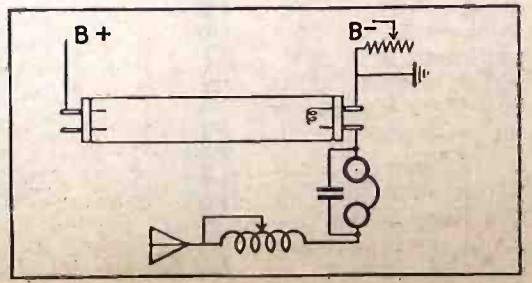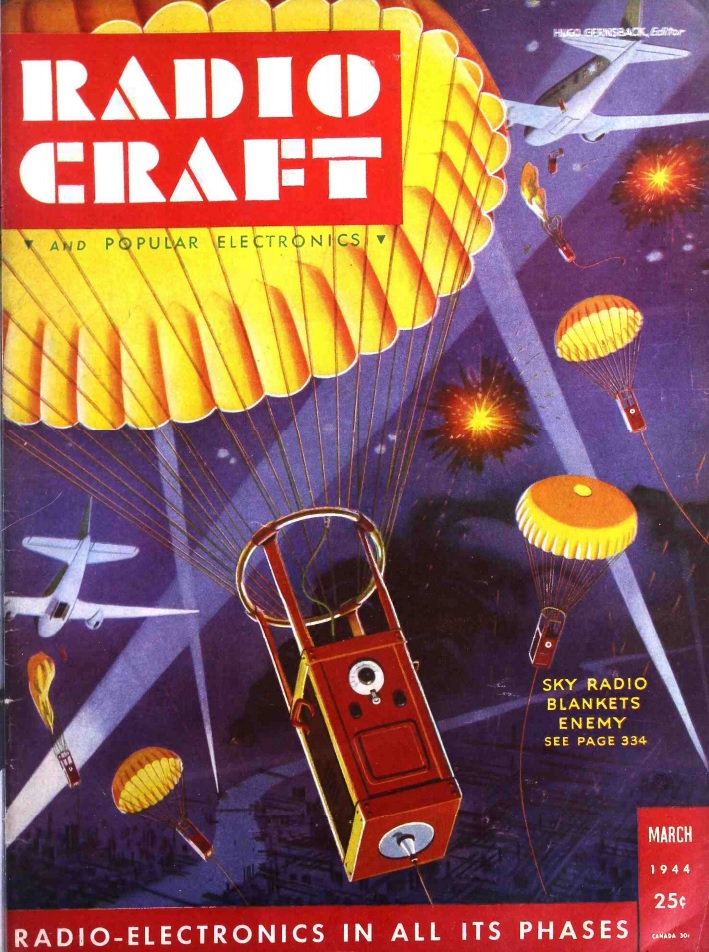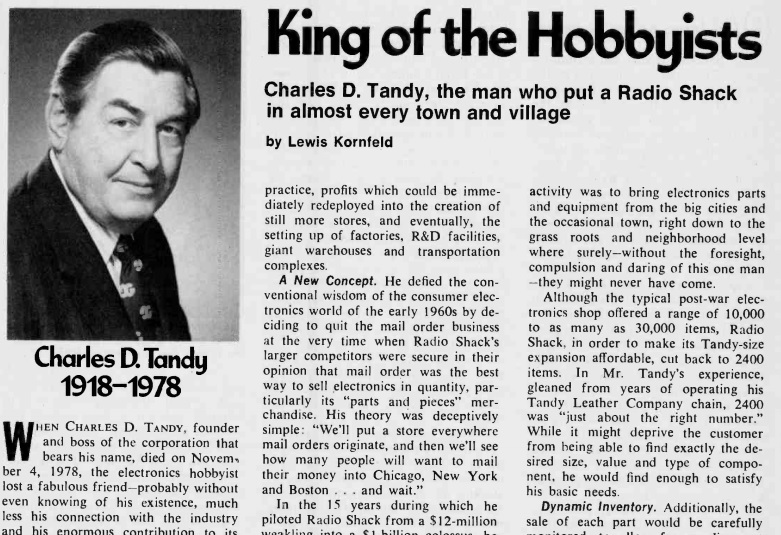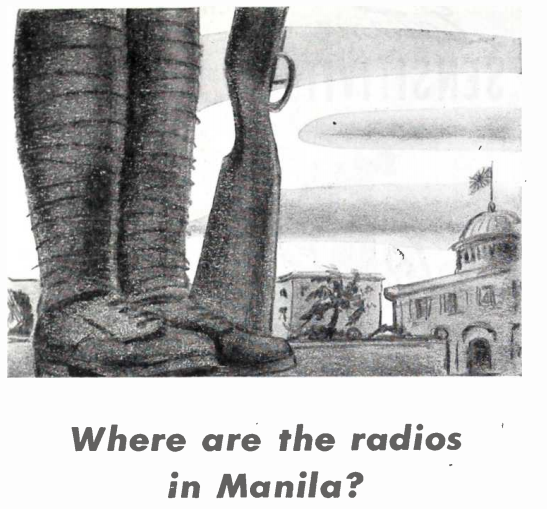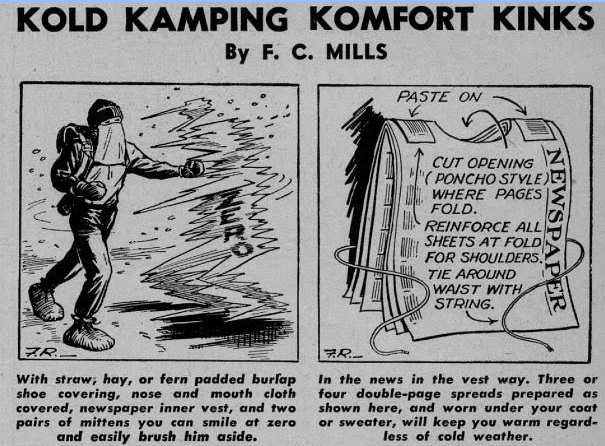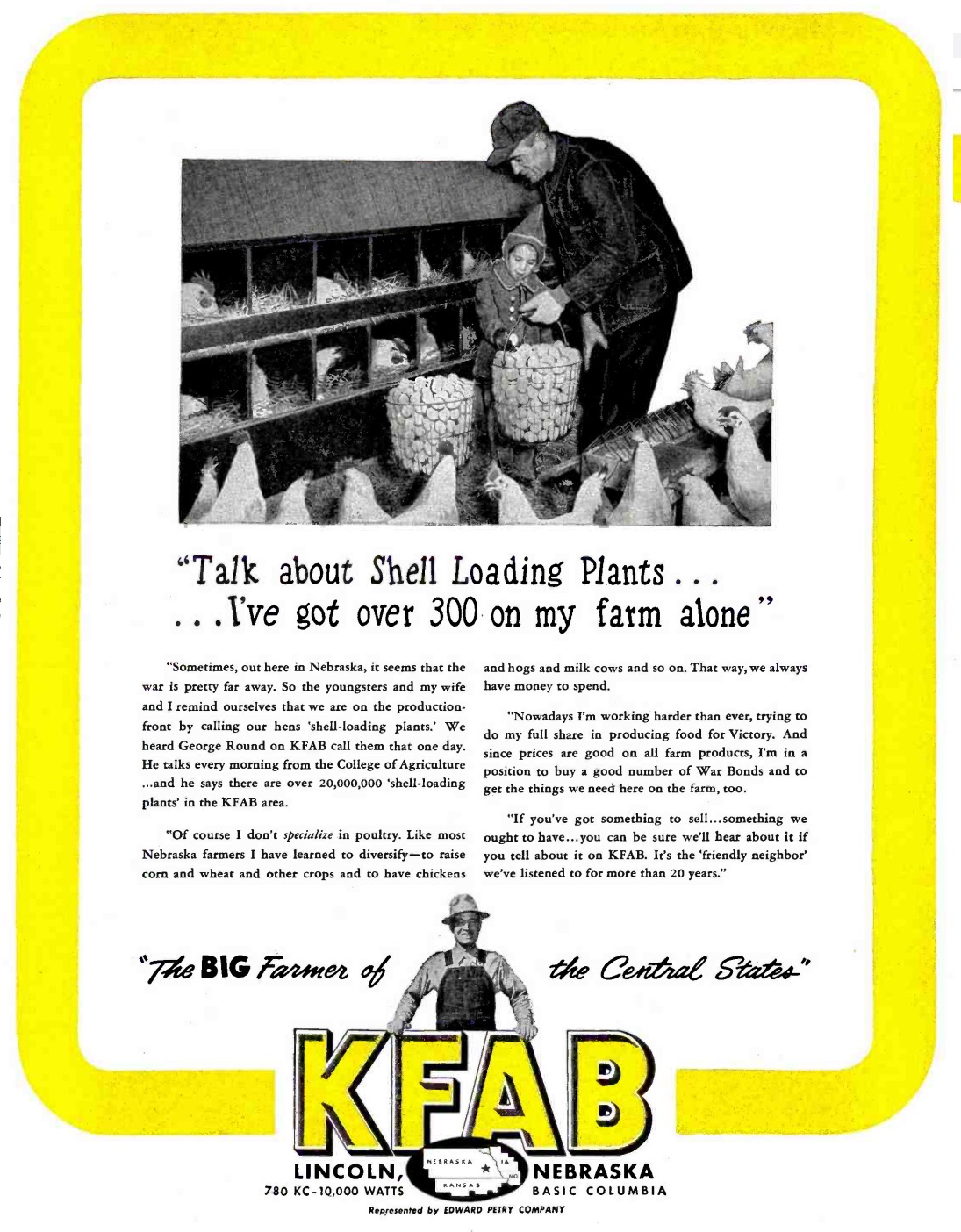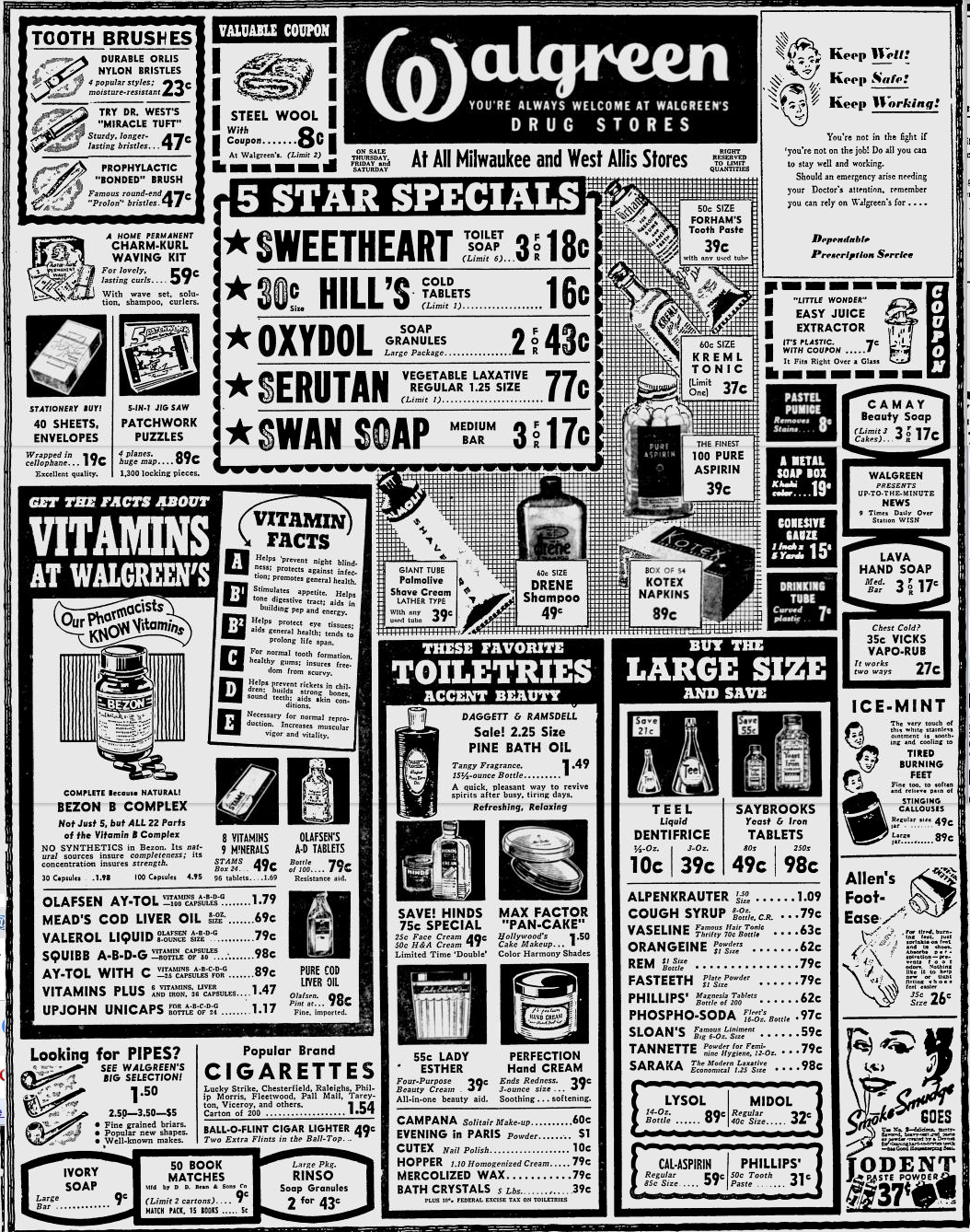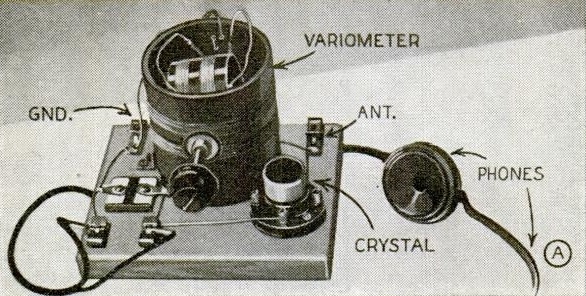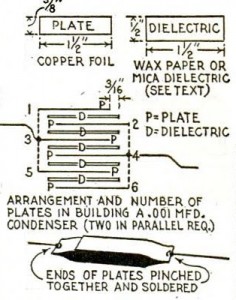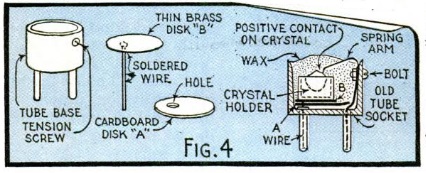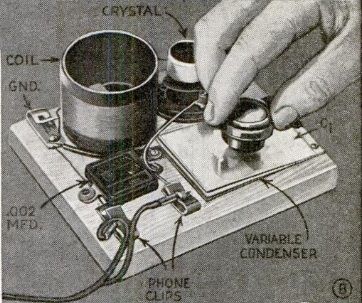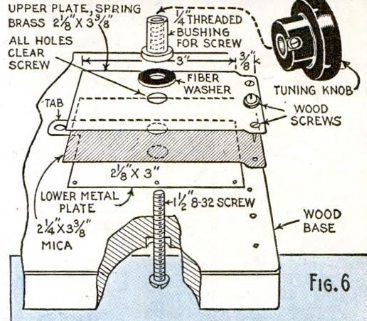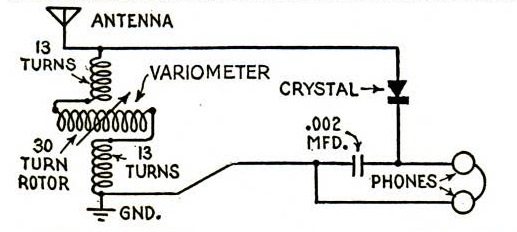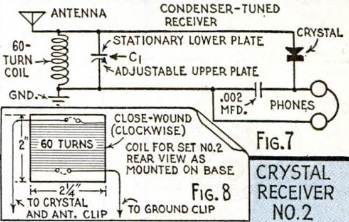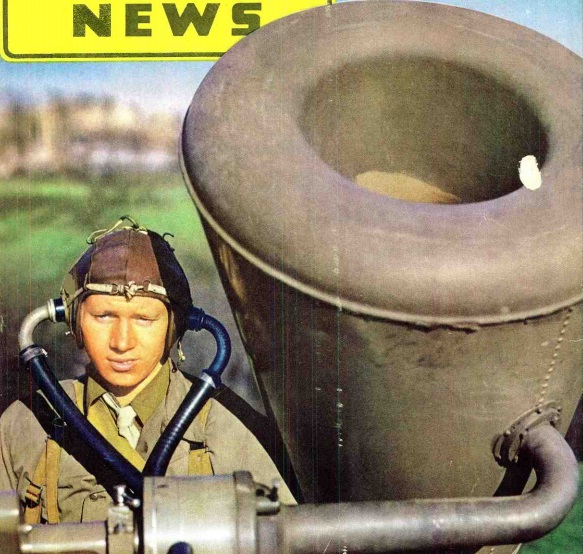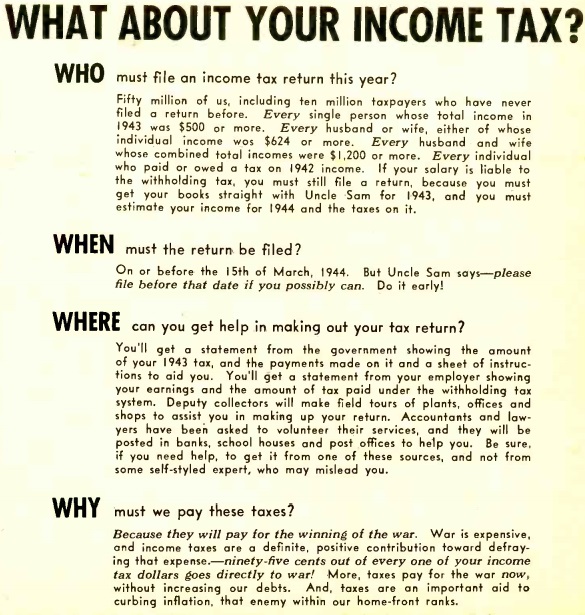 Seventy-five years ago this month, the March 1944 issue of Radio Mirror carried these helpful pointers on filing your income tax return, which was due on March 15.
Seventy-five years ago this month, the March 1944 issue of Radio Mirror carried these helpful pointers on filing your income tax return, which was due on March 15.
The magazine noted that some fifty million Americans would need to file, ten million of which would be first-time filers. Single persons were required to file if their income was over $500 per year. For married couples, a return was required if either spouse had income of $624, or if their combined income exceeded $1200.
Even though it was new to many people, the government was there to help. Government men would be sent to many offices and plants to help workers fill out the forms. Also, volunteer lawyers and accountants would be strategically located at banks, post offices, and schools. The magazine encouraged seeking out these forms of help, and warned of the perils of talking to other self-styled experts.
According to the magazine, 95% of the income tax went to winning the war. It also noted that the income tax was an important way to fight inflation, “that enemy within our home-front ranks.”

